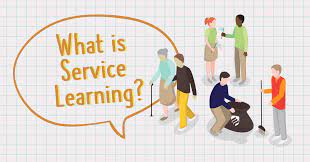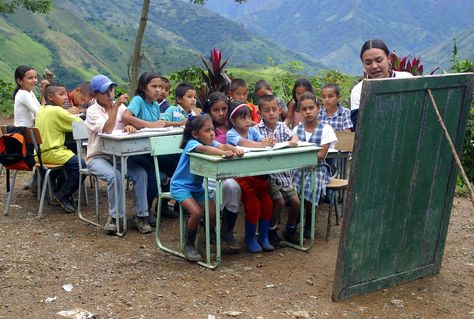1. “Set your goals high, and don’t stop till you get there.” – Bo Jackson
2. “The greater danger for most of us lies in setting our aim too low and achieving it.” – Michelangelo
3. “What you get by achieving your goals is not as important as what you become by achieving your goals.” – Zig Ziglar
4. “If you want to be happy, set a goal that commands your thoughts, liberates your energy and inspires your hopes.” – Andrew Carnegie
5. “Setting goals is the first step in turning the invisible into the visible.” – Tony Robbins
6. “Your life only gets better when you get better.” – Brian Tracy
7. “Obstacles are those frightful things you see when you take your eyes off your goal.” – Henry Ford
8. “The only thing standing between you and your goal is the story you keep telling yourself as to why you can’t achieve it.” – Jordan Belfort
9. “You are never too old to set another goal or to dream a new dream.” – C.S. Lewis
10. “If you don’t set goals, you can’t regret not reaching them.” – Yogi Berra
11. “Goals are dreams with deadlines.” – Diana Scharf Hunt
12. “The future belongs to those who believe in the beauty of their dreams.” – Eleanor Roosevelt
13. “You miss 100% of the shots you don’t take.” – Wayne Gretzky
14. “By recording your dreams and goals on paper, you set in motion the process of becoming the person you most want to be.” – Mark Victor Hansen
15. “A goal is a dream with a deadline.” – Napoleon Hill
16. “It’s not about the goal; it’s about growing to become the person that can accomplish that goal.” – Tony Robbins
17. “A goal without a plan is just a wish.” – Antoine de Saint-Exupéry
18. “People with clear, written goals, accomplish far more in a shorter period of time than people without them could ever imagine.” – Brian Tracy
19. “You don’t have to be great to start, but you have to start to be great.” – Zig Ziglar
20 “Set your goals, follow your dreams, listen to your heart and don’t let anything stand in your way.” – Brandy Johnson
21. “Success is the progressive realization of worthwhile, predetermined personal goals.” – Paul J. Meyer
22. “The best way to predict the future is to create it.” – Peter Drucker
23. “Begin with the end in mind.” – Stephen Covey
24. “Goals allow you to control the direction of change in your favor.” – Brian Tracy
25. “All successful people have a goal; no one can get anywhere unless he knows where he wants to go and what he wants to be or do.” – Norman Vincent Peale
26. “If you aim at nothing, you’ll hit it every time.” – Zig Ziglar
27. “If you aim at nothing, you’ll hit it every time.” – Zig Ziglar
28. “Dream big and dare to fail.” – Norman Vaughan
29. “Give me a stock clerk with a goal, and I’ll give you the man who will make history. Give me a man without a goal, and I’ll give you the stock clerk.” – J.C Penney
30. “Set your sights high, the higher the better.” – Eileen Caddy
31. “The trouble with not having a goal is that you can spend your life running up and down the field and never score.” – Bill Copeland
32. “Goals. There’s no telling what you can do when you get inspired by them. There’s no telling what you can do when you believe in them. And there’s no telling what will happen when you act upon them.” – Jim Rohn
33. “You are never too old to set another goal or to dream a new dream.” – C.S. Lewis
34. “You miss 100% of the shots you don’t take.” – Wayne Gretzky
35. “Setting goals is the first step in turning the invisible into visible.” – Tony Robbins
36. “If you don’t set goals, you can’t regret not reaching them.” – Yogi Berra
37. “If you set your goals ridiculously high and it’s a failure, you will fail above everyone else’s success.” – James Cameron
38. “Success is steady progress toward one’s personal goals.” – Jim Rohn
39. “People with goals succeed because they know where they’re going.” – Earl Nightingale
40. “A goal properly set, is halfway reached.” – Zig Ziglar
41. “Your goals are the road maps that guide you and show you what is possible for your life.” – Les Brown
42. “It’s not about the goal. It’s about growing to become the person that can accomplish that goal.” – Anthony Robbins
43. “If you want to live a happy life, tie it to a goal, not to people or things.” – Albert Einstein
44. “The person who moves mountains begins by carrying away small stones.” – Confucius
45. “A goal is not always meant to be reached; it often serves simply as something to aim at.” – Bruce Lee
46. “Set your goals high enough to inspire you and low enough to encourage you.” – Unknown
47. “You must decide what you want and set the goal in your mind.” – Napoleon Hill
48. “Don’t watch the clock; do what it does. Keep going.” – Sam Levenson
49. “Goals determine what you’re going to be.” – Julius Erving
50. “To reach a port we must set sail. Sail, not tie at anchor. Sail, not drift.” – Franklin D. Roosevelt
51. “Your goal should be just out of reach, but not out of sight.” – Denis Waitley
52. “We are kept from our goal, not by obstacles but by a clear path to a lesser goal.” – Robert Brault
53. “To accomplish great things, we must dream as well as act.” – Anatole France
54. “What keeps me going is goals.” – Muhammad Ali
55. “In the absence of clearly defined goals, we become strangely loyal to performing daily trivia until ultimately we become enslaved by it.” – Robert Heinlein
56. “Aim for the moon; if you miss, you may hit a star.” – W. Clement Stone
57. “Only those who will risk going too far can possibly find out how far one can go.” – T.S Eliot
58. “You are never too old to set another goal or to dream a new dream.” – C.S. Lewis
59. “Setting goals is the first step in turning the invisible into the visible.” – Tony Robbins
60. “What you get by achieving your goals is not as important as what you become by achieving your goals.” – Henry David Thoreau
61. “Our goals can only be reached through a vehicle of a plan, in which we must fervently believe, and upon which we must vigorously act.” – Pablo Picasso
62. “Set your goals high, and don’t stop till you get there.” – Bo Jackson
63. “Success is steady progress toward one’s personal goals.” – Jim Rohn
64. “To reach a port, we must set sail – Sail, not tie at anchor – Sail, not drift.” – Franklin D. Roosevelt
65. “It’s not about the goal; it’s about growing to become the person that can accomplish that goal.” – Tony Robbins
66. “You should set goals beyond your reach, so you always have something to live for.” – Ted Turner
67.”Believe you can and you’re halfway there.” – Theodore Roosevelt
68. “You’ve got to have a goal because without one you cannot score.” – Paul Arden
69. “Your life is controlled by what you focus on; that’s why you need to set meaningful goals.” – Unknown Author







